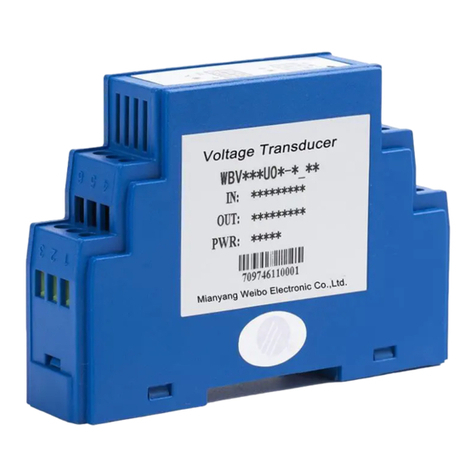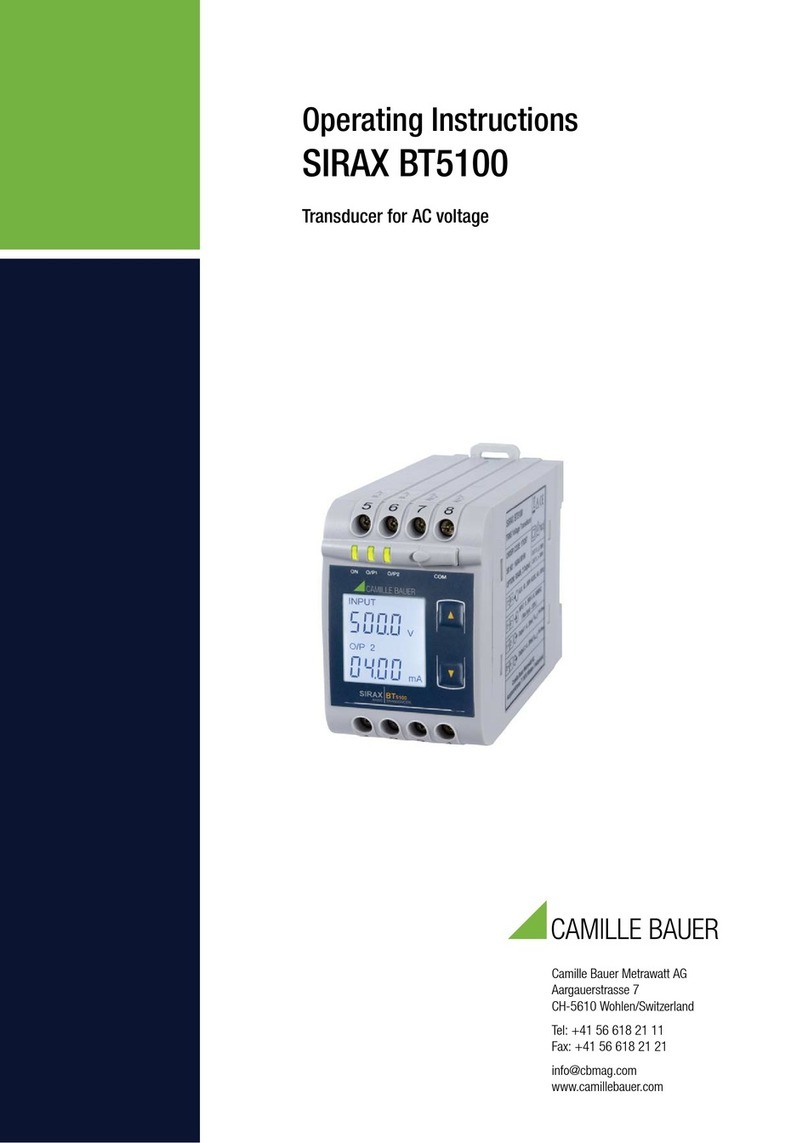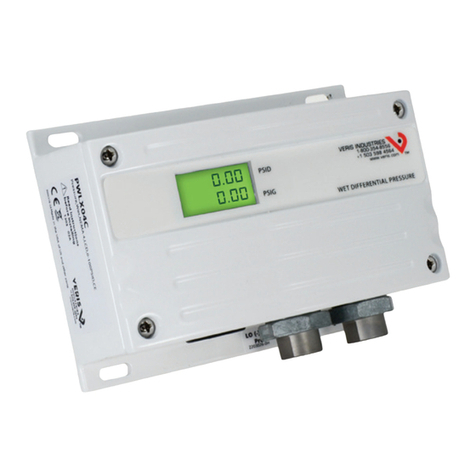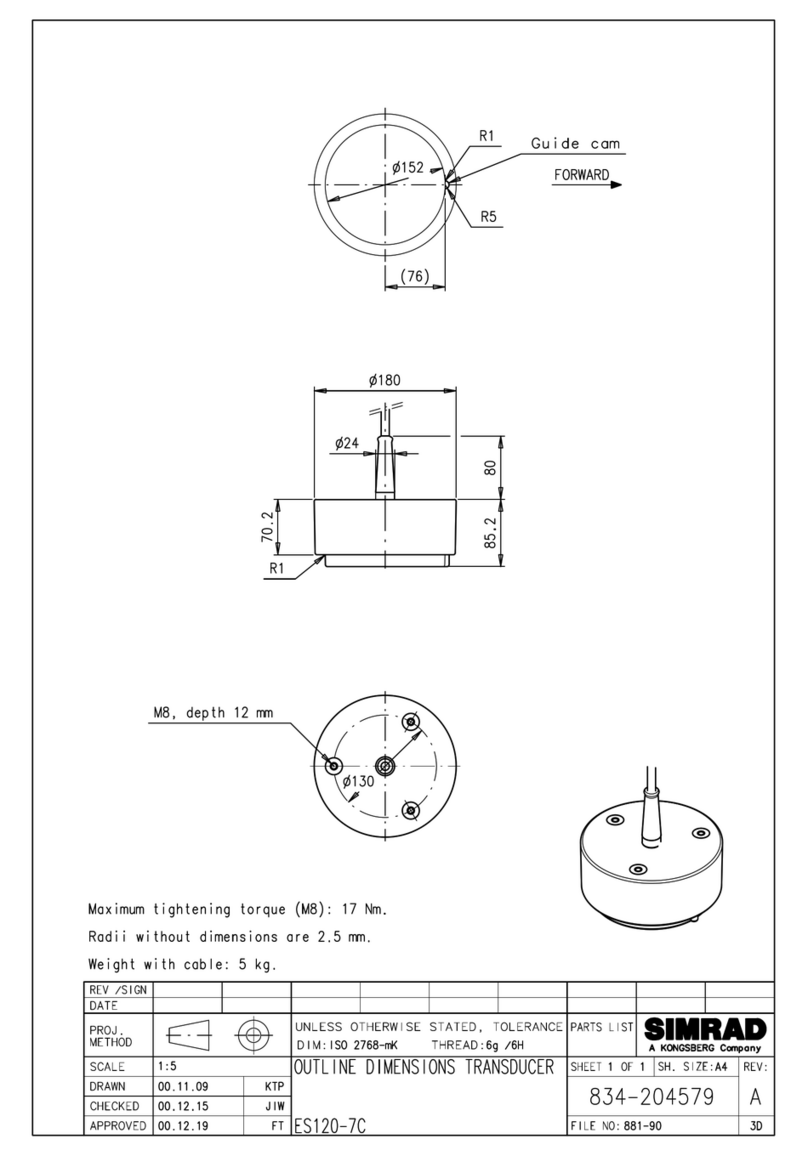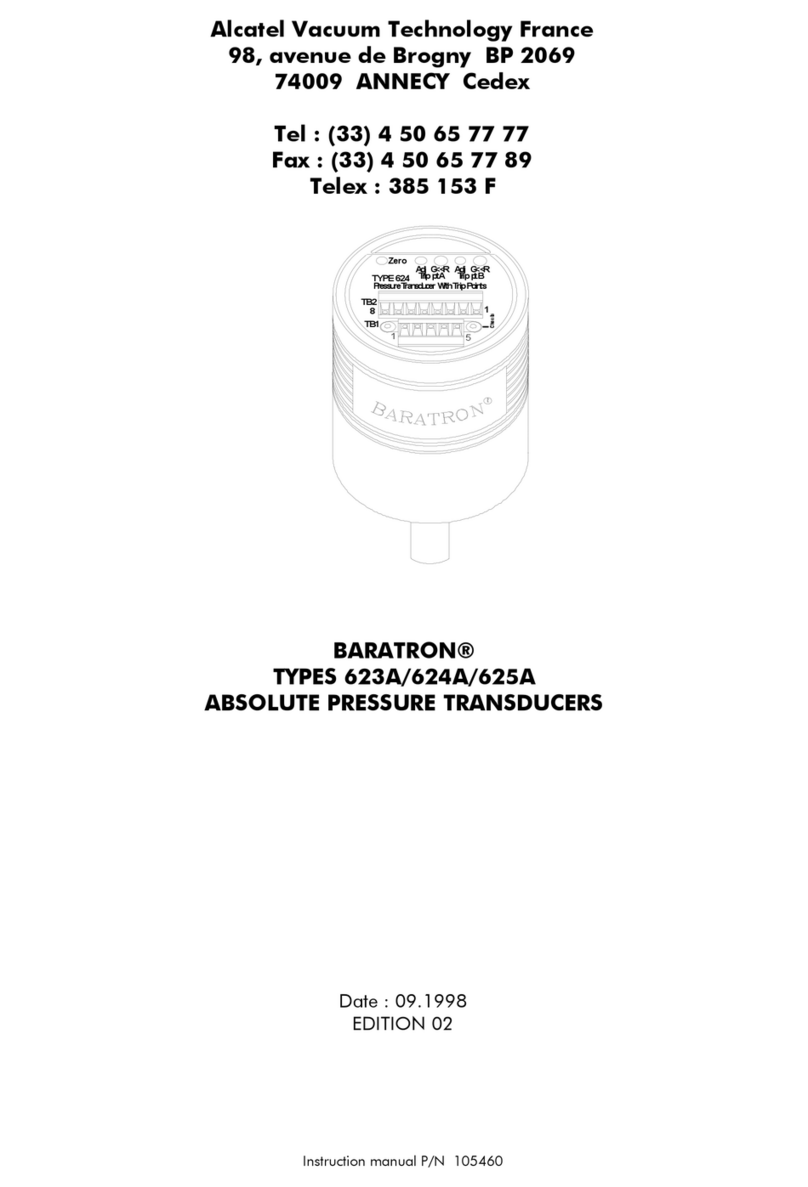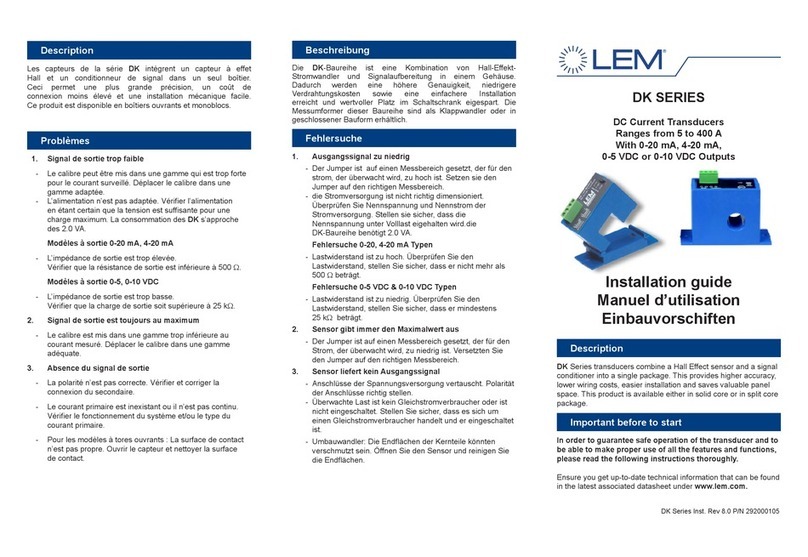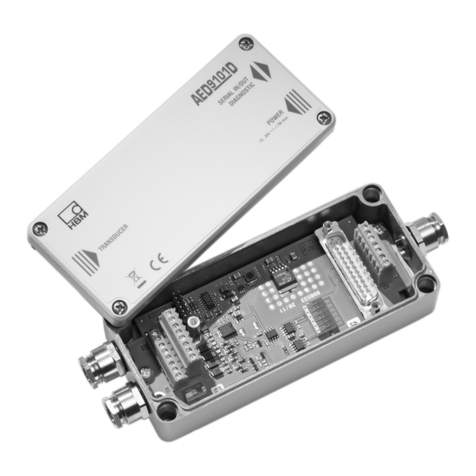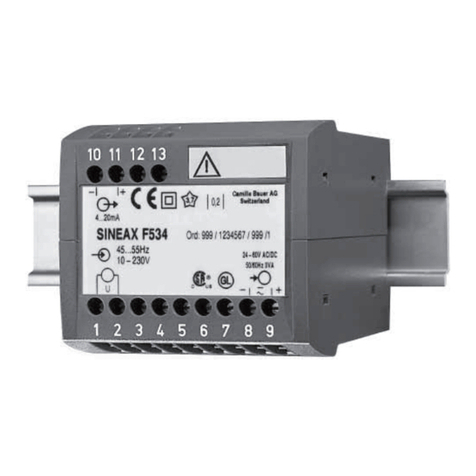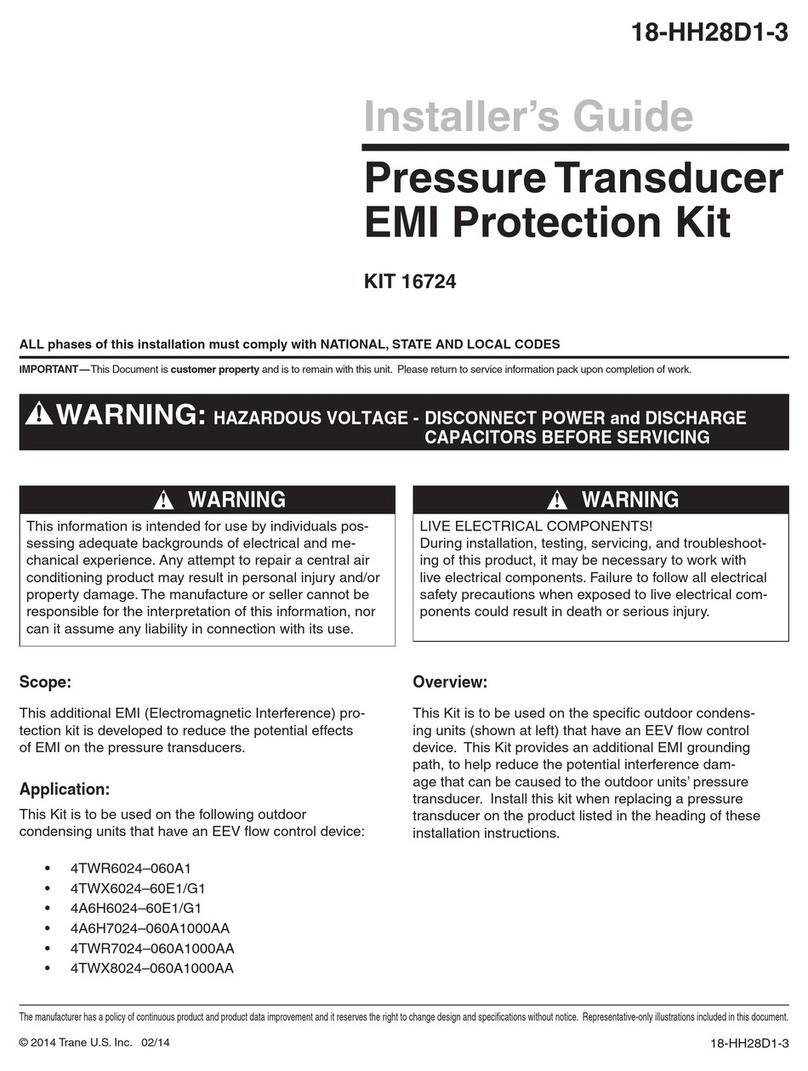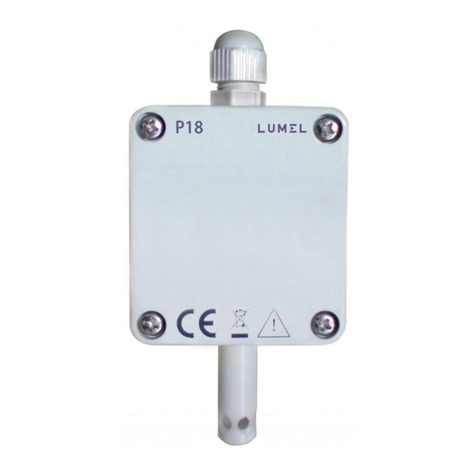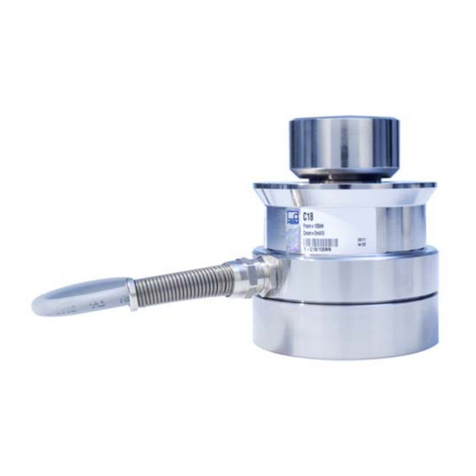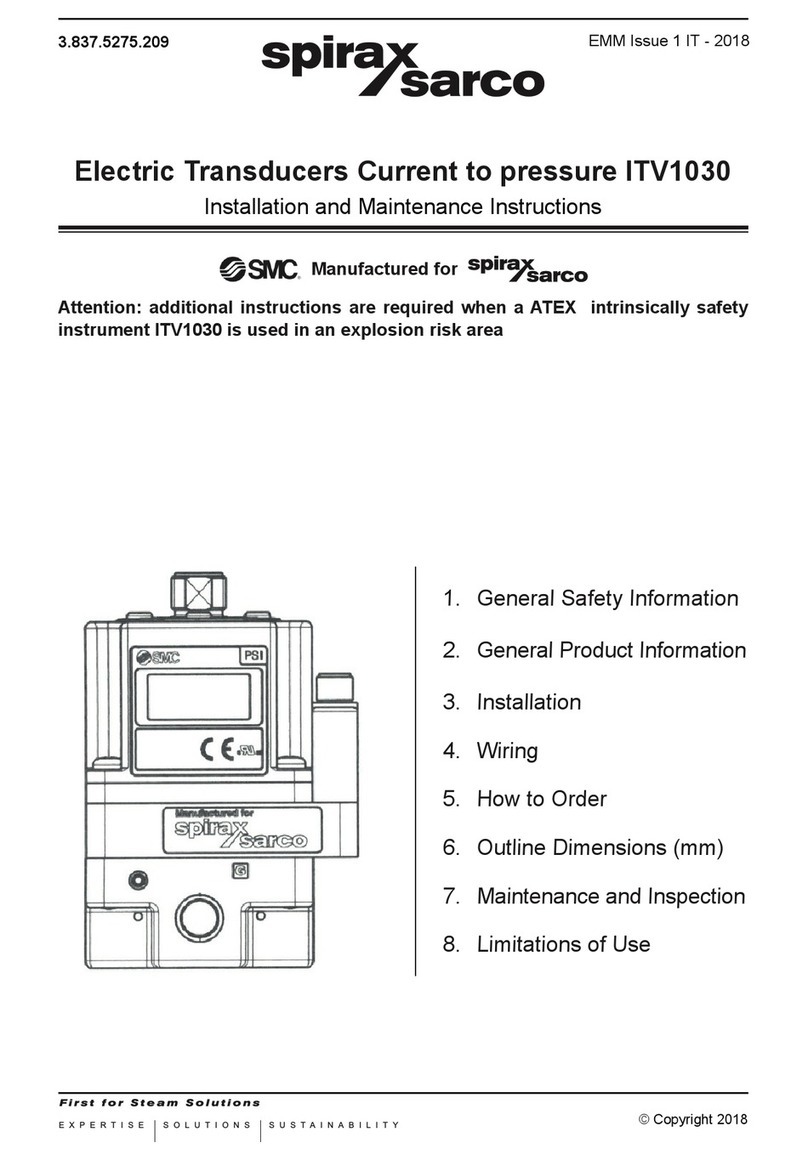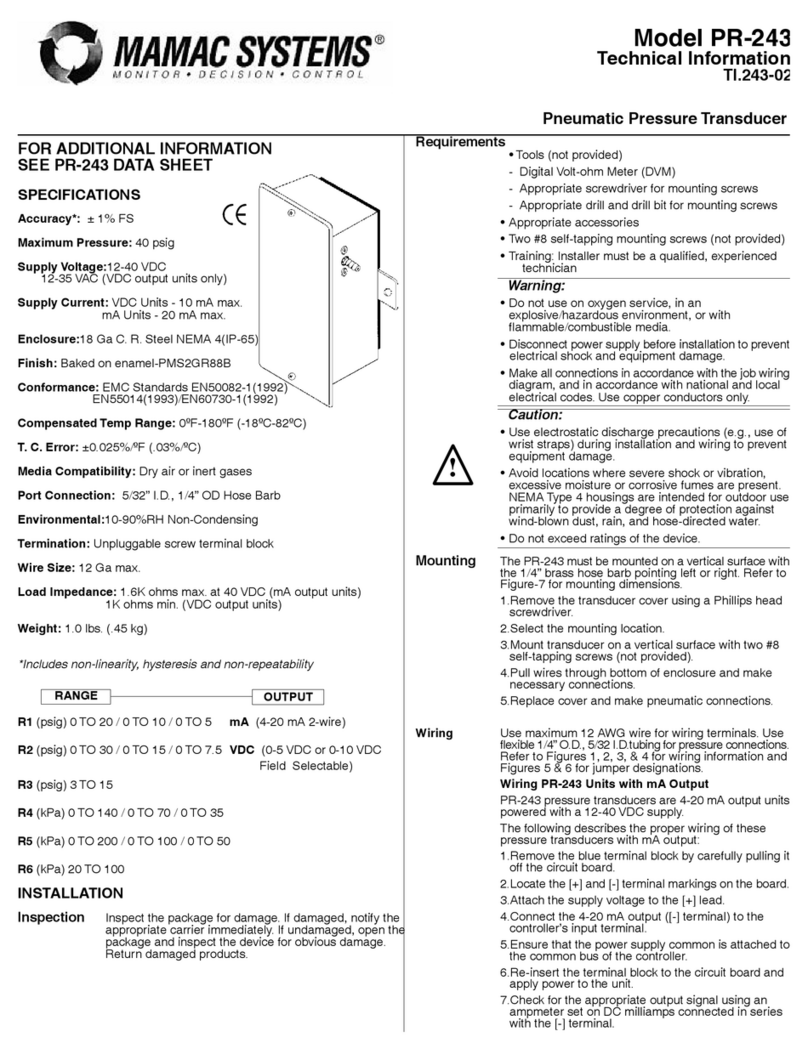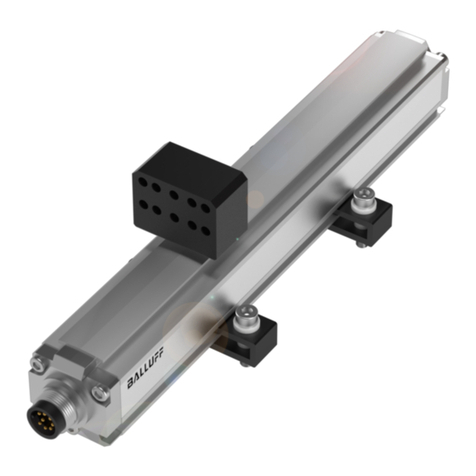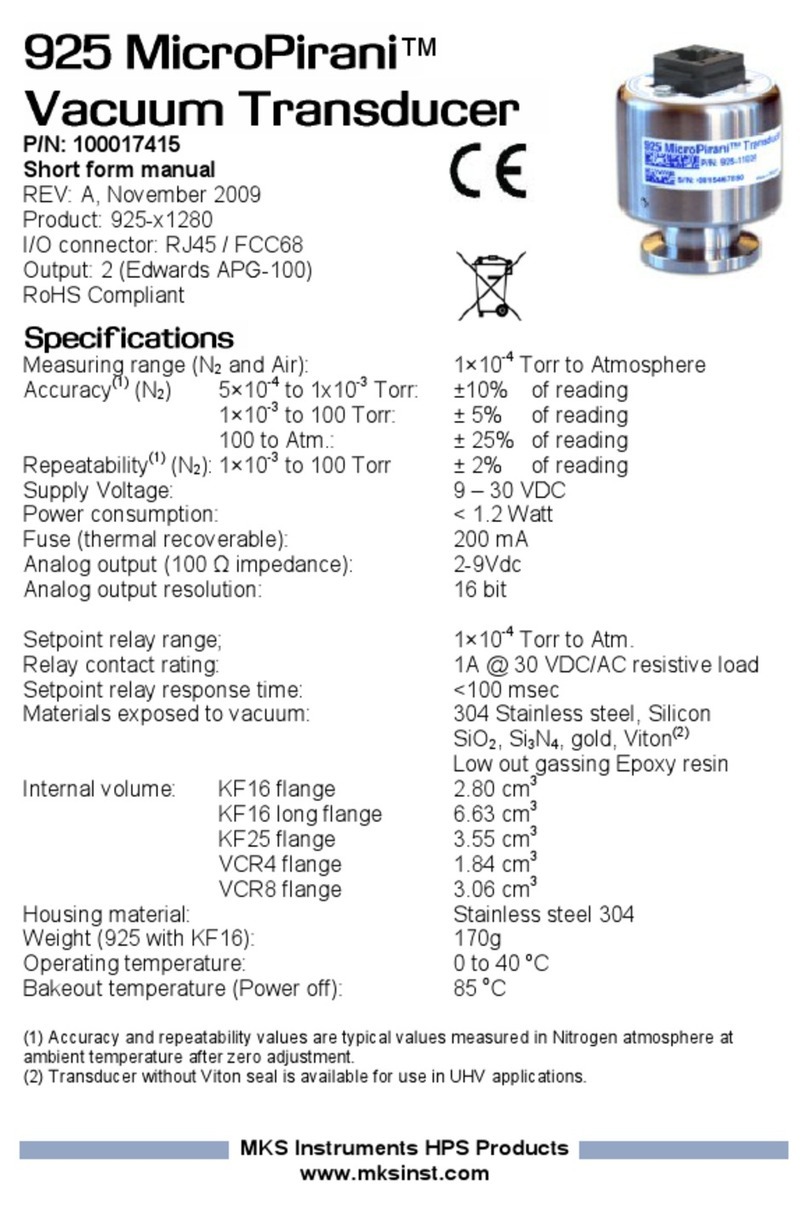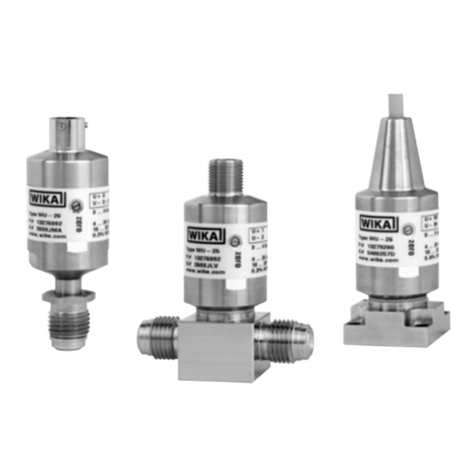
Chapter One: General Information Introduction
105459 - Ed 02 3
Chapter One: General Information
Introduction
The Baratron® Type 622A, 626A, 627A and 628A Absolute Pressure Transducers are part of the
ALCATEL family of general purpose pressure transducers designed to provide accurate, reliable,
and repeatable pressure measurements in the range from 1 KTorr or mbar to as low as 0.1 Torr
or mbar Full Scale (627A and 628A). These instruments operate with ±15 VDC (±5%) input @
35 mA, 250 mA, or 500 mA, depending upon the unit, and provide 0 to 10 VDC output linear
with pressure. All instruments expose only Inconel to the process permitting use with corrosive or
dirty gases and eliminating contamination of the process with transducer materials.
Measurements are independent of gas composition and all of the units have a minimum
measuring range of four decades.
Using the latest single-sided, dual-electrode Inconel®transducer design, coupled with a low
impedance, fixed-frequency bridge signal conditioner, these instruments are capable of
withstanding high overpressure conditions (45 psia) with minimal or no shifts in output over their
range. The advanced bridge signal conditioning technology provides high accuracy and
operation which is extremely temperature-stable at operating pressure.
Protection from RF interference and noisy electrical environments is increased by the use of a
metal case, by internal design elements, and by the use of surge and ESD suppression networks
and RFI filtering on all inputs and outputs.
The Types 622A and 626A transducers have an accuracy of 0.25% of reading (optional 0.15%
of reading), and are identical except for their connectors; the 622A unit has a 5-pin terminal
block connector and the 626A unit has a 15-pin Type «D» connector. These instruments have
been developed for applications requiring a small, economical transducer which delivers accurate
and repeatable measurements with a resolution of 1 x 10-4 F.S.
The Types 627A and 628A instruments are designed specifically to meet the needs of vacuum
process systems where environmental and process conditions are particularly demanding.
Temperature control of the transducer minimizes the effects of ambient or process temperature
variations typically encountered in process line environments. The 627A transducer controls the
transducer temperature at 45° C and the 628A unit controls the transducer temperature at
100°C, thereby minimizing contamination from the process. The 627A transducer has an
accuracy of 0.12% of reading (0.1 Torr or mbar units have an accuracy of 0.15% of reading),
and the Type 628A transducer has an accuracy of 0.25% of reading.
